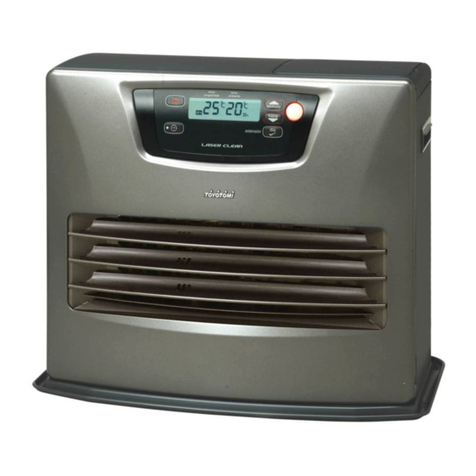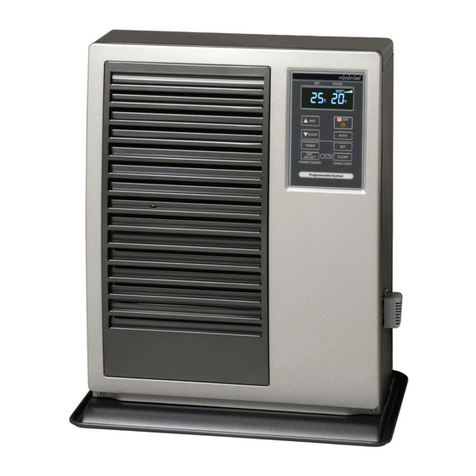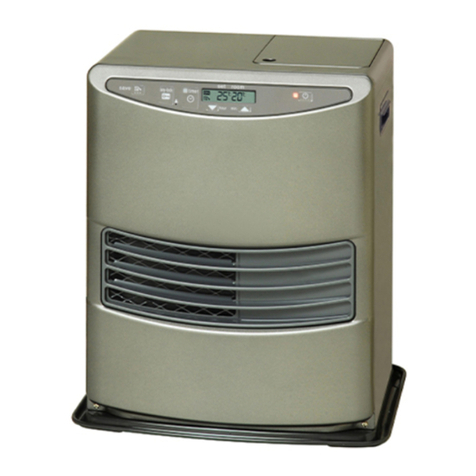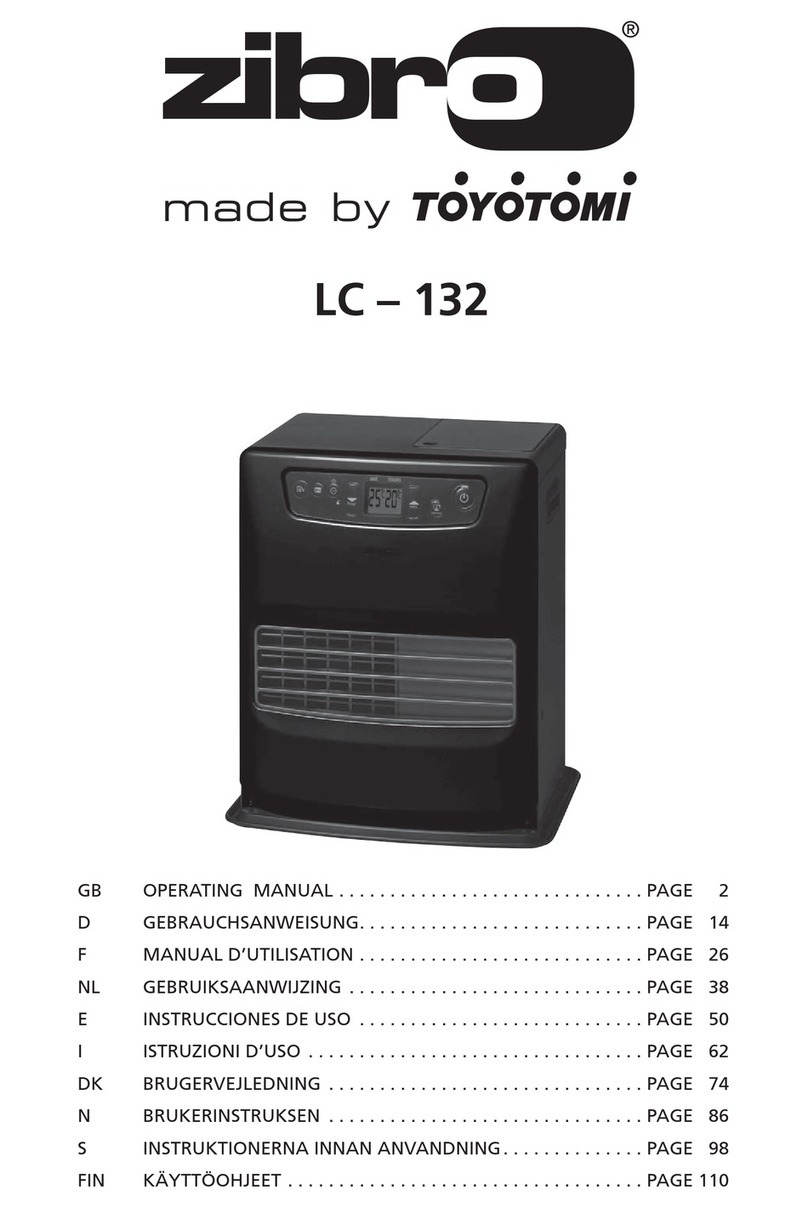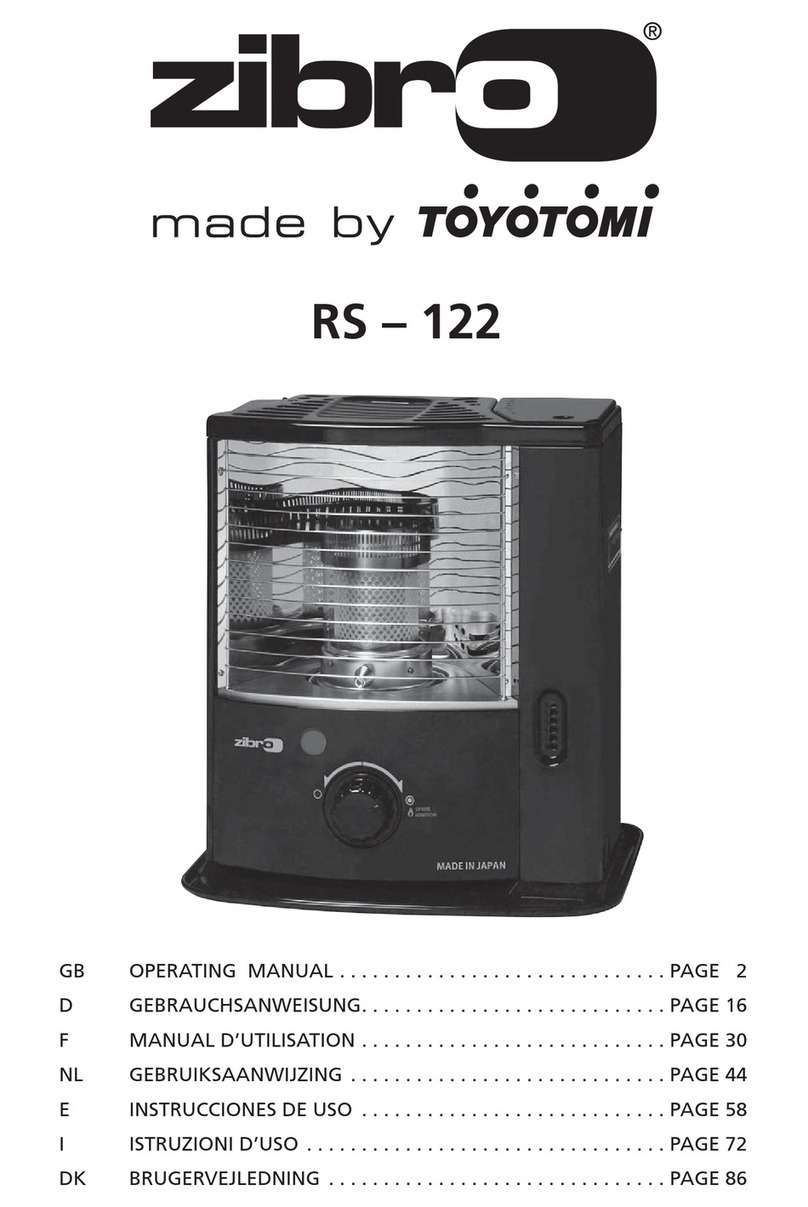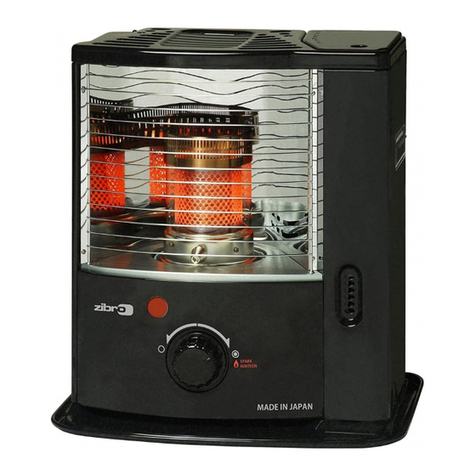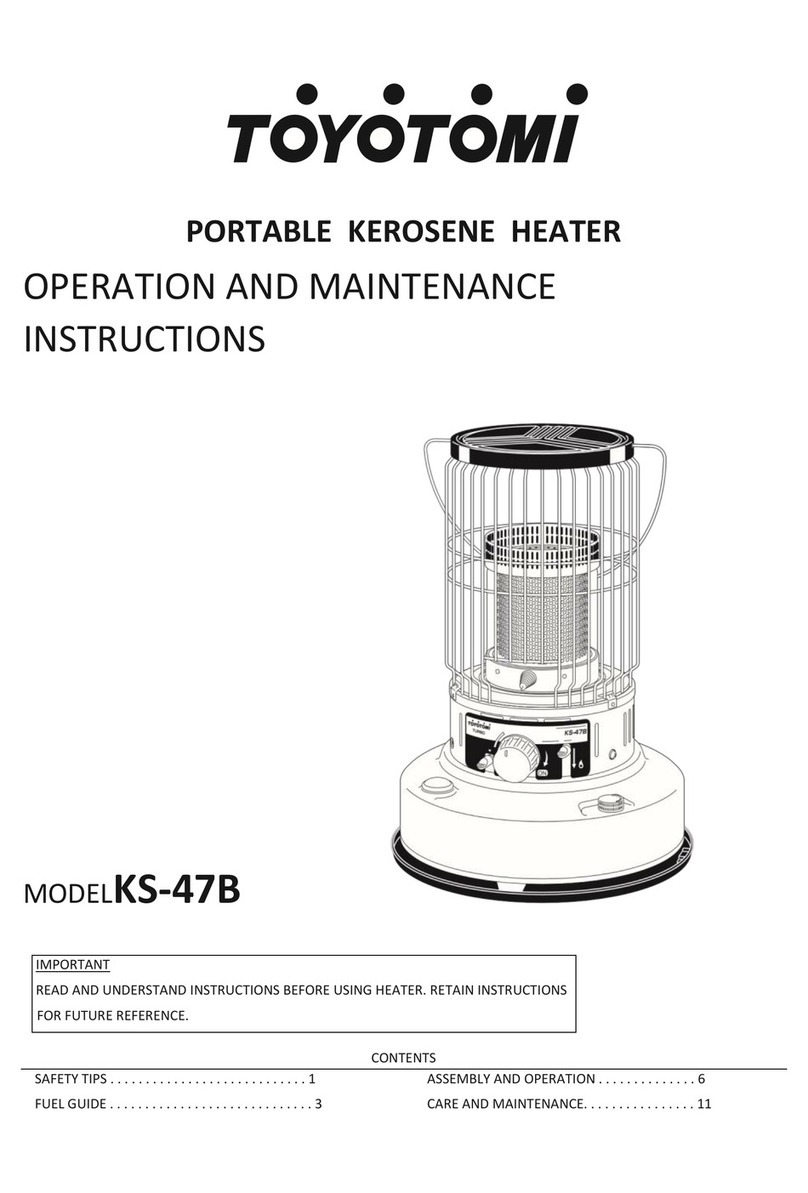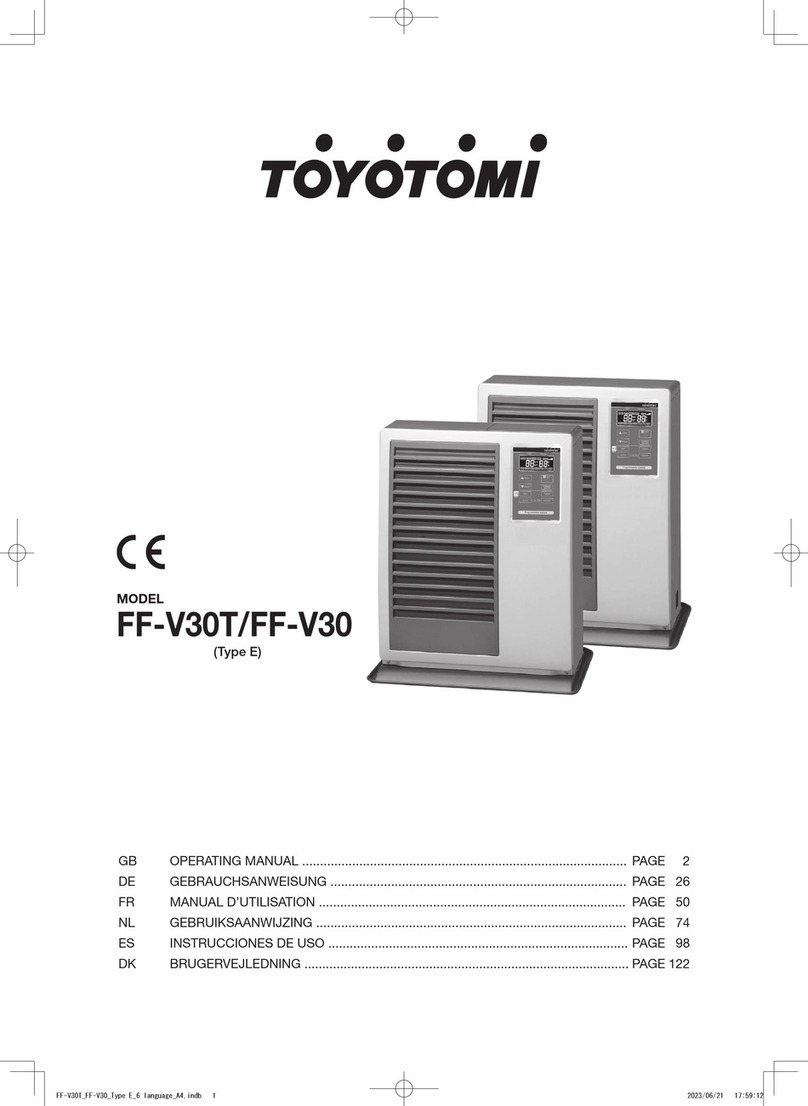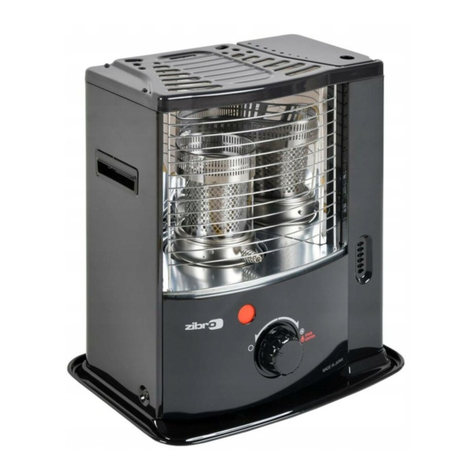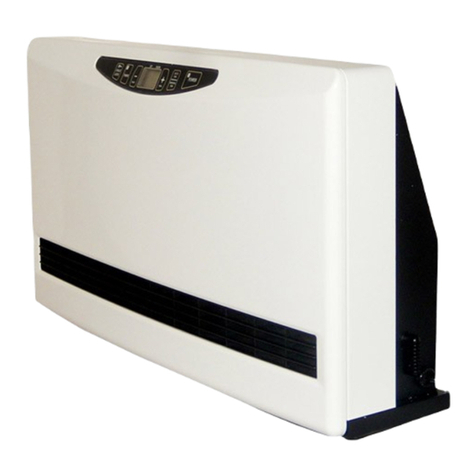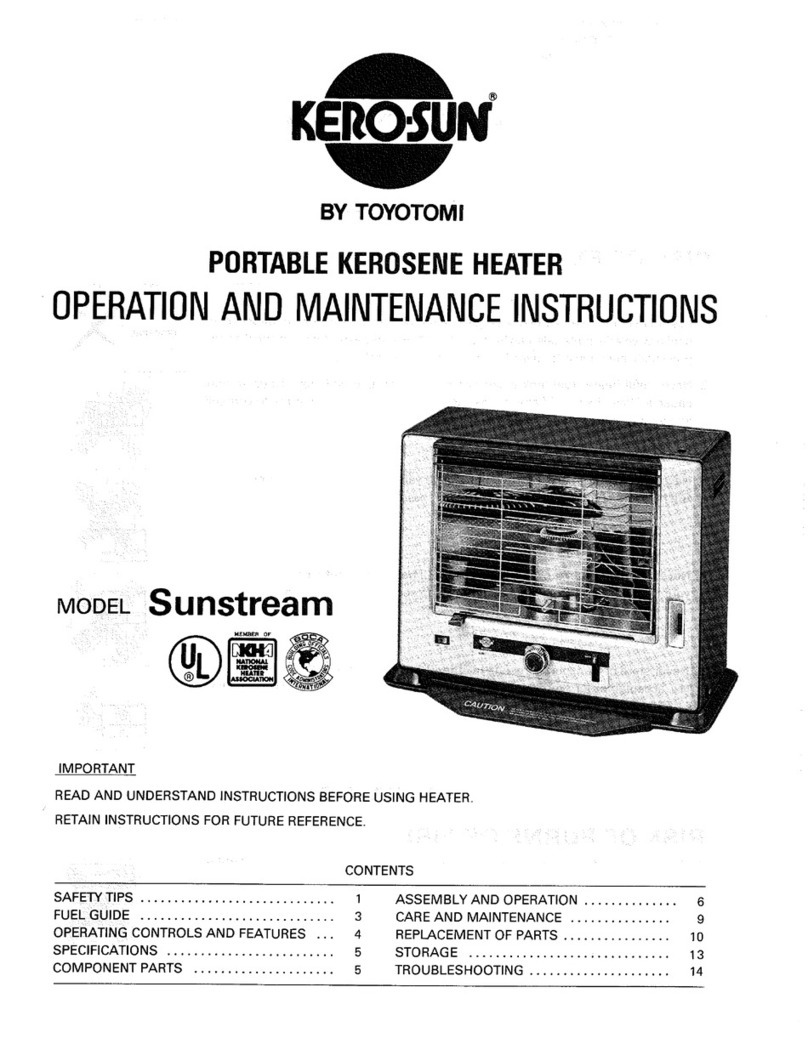
1
SAFETY TIPS
BEFORE OPERATING YOUR HEATER, PLEASE review these safety tips:
RISK OF EXPLOSION
1.
NEVER use any fuel other than clean kerosene (paraffin).
NEVER use gasoline (petrol). Use of gasoline (petrol) can lead to uncontrollable flames resulting
in a destructive fire. Even kerosene (paraffin) contaminated with small amounts of gasoline
(petrol), or similarly volatile materials, can be hazardous. NEVER use a can for kerosene
(paraffin) that has previously been used for gasoline (petrol), paint thinner, or solvents.
2.
NEVER refill heater fuel tank when heater is operating or still hot. To do so may cause a
“flash back“ of flame to the fuel container, resulting in injury to yourself and your property.
3. NEVER use heater in areas where flammable vapors or gases may be present.
Especially avoid use of heater where gasoline (petrol), naphtha, acetone or other volatile
solvents are in the air, or whose containers are open. Such vapors could be ignited by
the heater, resulting in fire and/or explosion.
4. NEVER fill heater fuel tank in living space. Fill heater tank outdoors. NEVER overfill your
heater. Always replace heater tank cap securely after refueling. Spillage of kerosene
(paraffin) produces strong odor which is hard to remove. Spillage on carpet can be
ignited if match or some other ignition source contacts it.
5.
NEVER store or transport kerosene (paraffin) in other than a metal or plastic container that is
(1) acceptable for kerosene (paraffin), (2) non-red in color, and (3) clearly marked,
“KEROSENE (PARAFFIN)”. NEVER store kerosene (paraffin) in the living space. Picking up a
gasoline (petrol) can by mistake when fueling is a major cause of heater fires.
RlSK OF BURNS OR FIRE
1. Observe the heater carefully for 15-20 minutes after start-up. Problems of improper
adjustment of wick height or improperly seated heat chamber should become evident
during this warm up period.
NOTE: Carefully follow the instructions for lighting and adjusting the flame.
2. Due to high surface temperatures, keep away from children, furniture and clothing.
1. NEVER use any fuel other than clean kerosene (paraffin).
NEVER use gasoline (petrol). Use of gasoline (petrol) can lead to uncontrollable flames resulting
in a destructive fire. Even kerosene (paraffin) contaminated with small amounts of gasoline
(petrol), or similarly volatile materials, can be hazardous. NEVER use a can for kerosene
(paraffin) that has previously been used for gasoline (petrol), paint thinner, or solvents.
2. The appliance is to be used only with paraffin, class C1 burner fuel in accordance with
BS 2869 Part 2.
3. NEVER refill heater fuel tank when heater is operating or still hot. To do so may cause
a “flash back“ of flame to the fuel container, resulting in injury to yourself and your property.
4. NEVER use heater in areas where flammable vapors or gases may be present.
Especially avoid use of heater where gasoline (petrol), naphtha, acetone or other volatile
solvents are in the air, or whose containers are open. Such vapors could be ignited by the
heater, resulting in fire and/or explosion.
5. NEVER fill heater fuel tank in living space. Fill heater tank outdoors. NEVER overfill your
heater. Alwaysreplace heater tank cap securely after refueling. Spillage of kerosene
(paraffin) produces strong odor which is hard to remove. Spillage on carpet can be
ignited if match or some other ignition source contacts it.
6. NEVER store or transport kerosene (paraffin) in other than a metal or plastic container that
is (1) acceptable for kerosene (paraffin), (2) non-red in color, and (3) clearly marked,
“KEROSENE (PARAFFIN)”. NEVER store kerosene (paraffin) in the living space. Picking up a
gasoline (petrol) can by mistake when fueling is a major cause of heater fires.
RIGHT
KEROSENE
(PARAFFIN)
WRONG
GASOLINE
(PETROL)
WARNING
WARNING
3. DO NOT operate heater without protective guards completely attached.
4. DO NOT use heater to heat or boil water or as a cooking appliance. DO NOT place
cooking utensils, tea kettles or any other object on top of heater while in operation.
6. DO NOT operate heater less than one (1) meter from walls, draperies, clothing, or
furniture. The operation of any heating appliance too close to such materials could cause
them to ignite, possibly resulting in a serious fire.
9. Before going out, or at bedtime, turn the heater off, making sure the wick is in its lowest
position (see EXTINGUISHING THE FLAME on page 10) and flame is completely
extinguished.
RISK OF INDOOR AIR POLLUTlON
position (see EXTINGUISHING THE FLAME on page 9) and flame is completely
WARNING
5. DO NOT move, refuel or attempt to service your heater to avoid possible burns or fire while
it is burning or still hot. If the heater is dropped while it is burning, fuel spillage and flames
outside the heater may occur.
8. DO NOT operate heater in direct sunlight to avoid overheating, which may cause
abnormal flame behavior. DO NOT allow room temperature to go above 25-30˚C. lf the
room temperature exceeds 25-30˚C the flame may increase, thereby producing smoke.
7. DO NOT operate your heater in areas exposed to strong drafts to avoid unstable burning.
DO NOT operate heater in high-traffic areas such as doorways or hallways where it may
be touched, jarred or tipped accidentally.
DO NOT use the heater in a high wind.
Use heater only in well-ventilated areas. People with breathing problems should consult a
physician before using the heater.
“In a house of typical construction, that is, one that is not of unusually tight construction due
to heavy insulation and tight seals against air infiltration, an adequate supply of air for
combustion and ventilation is provided through infiltration. However, if the heater is used in
a small room where less than 200 cubic feet (5.7m3) of air space is provided for each
1,000Btu per hour of heater rating (considering the maximum burner adjustment), the
door(s) to adjacent room(s) should be kept open or a window to the outside should be
opened at least 1 inch (25.4mm) to guard against potential buildup of indoor air pollution.
DO NOT use the heater in a bathroom or any other small room with the door closed.”
